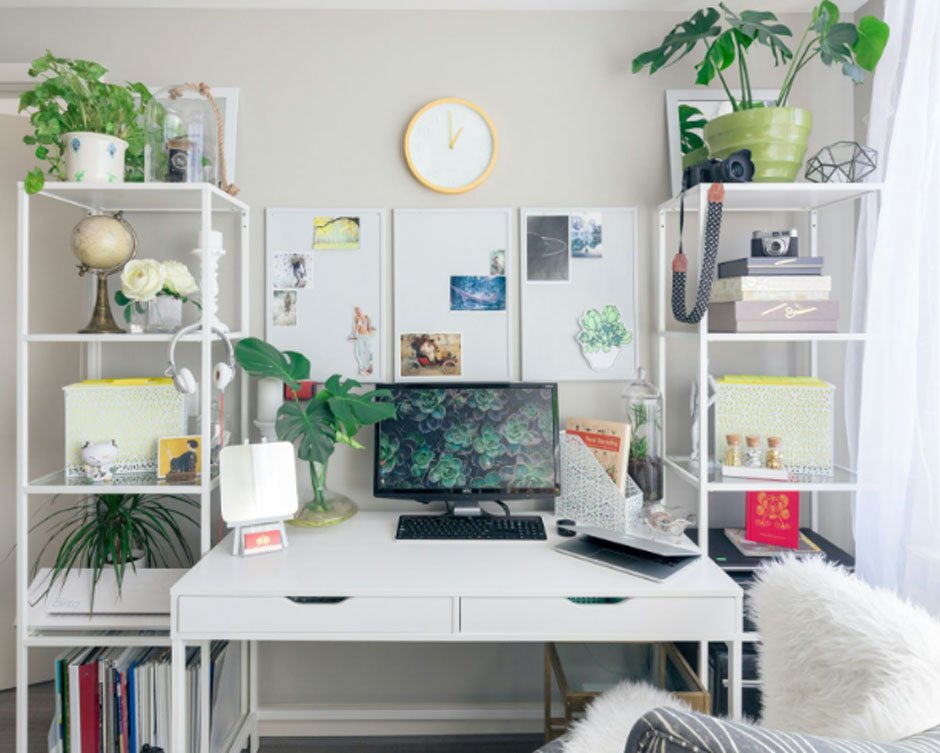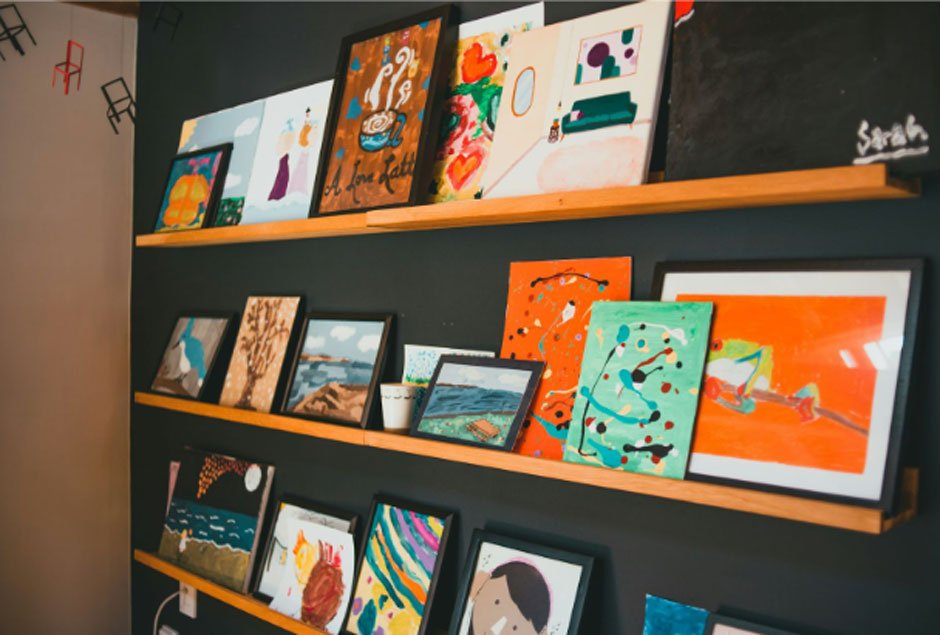There’s something magical about a space that just feels right. You know the feeling: you walk in, sit down, and suddenly ideas flow effortlessly. Your mind clears. Your creativity awakens. It’s not luck or coincidence. The spaces we inhabit have a profound impact on our ability to think, create, and produce meaningful work.
Whether you’re an artist, writer, designer, entrepreneur, or simply someone who wants a corner of their home that sparks joy and inspiration, crafting the right environment is essential. Yet most of us approach our workspaces haphazardly, accumulating furniture and equipment without considering how each element contributes to our creative flow. We settle for “good enough” when we deserve extraordinary.
The truth is, you don’t need an expensive renovation or a massive budget to create a space that fuels your creativity. What you need is intentionality. Every choice you make, from the color on your walls to the objects on your desk, sends signals to your brain about what kind of work happens here. This article will guide you through the essential elements of designing a creative space that doesn’t just look good, but actively supports your best work.
The Foundation: Defining Your Creative Identity
Before you move a single piece of furniture or buy anything new, take time to understand what kind of creative work you actually do. A graphic designer needs different tools and setup than a writer. A musician requires different considerations than a photographer. This isn’t about following rigid rules, but rather understanding your unique workflow and building around it.
Start by observing your natural work patterns. Are you someone who spreads out, covering every surface with materials and inspiration? Or do you prefer a minimalist approach with everything in its designated place? Do you work in long, focused stretches or short bursts of energy? There’s no right answer, only what’s right for you.
Consider the times when you’ve done your best work. What was the environment like? What made it special? Maybe it was a coffee shop with ambient noise, or a quiet library corner, or your kitchen table in the early morning light. These memories hold clues about the conditions that help you thrive. Your goal is to recreate those elements in your dedicated creative space.

Light: The Often Overlooked Game-Changer
Lighting might be the single most important element in your creative space, yet it’s frequently treated as an afterthought. Poor lighting doesn’t just strain your eyes; it drains your energy, affects your mood, and can even impact your perception of colors if you’re doing visual work.
Natural light is ideal when possible. Position your desk near a window, but be mindful of glare on your screen if you work digitally. North-facing windows provide consistent, indirect light throughout the day, while south-facing windows offer bright, warm light that changes character as the sun moves. If you’re lucky enough to have window placement options, experiment with different positions before committing to a permanent setup.
But natural light alone isn’t enough. You need layered lighting that serves different purposes. Overhead lighting provides general illumination, but can create harsh shadows. Task lighting, such as a quality desk lamp with adjustable brightness, illuminates your specific work area without overwhelming the entire room. Ambient lighting, perhaps from wall sconces or floor lamps, adds warmth and reduces the stark contrast between your bright work area and the surrounding space.
The temperature of your light bulbs matters more than most people realize. Cool white light (5000K-6500K) mimics daylight and can increase alertness and focus, making it ideal for morning work sessions or detail-oriented tasks. Warm white light (2700K-3000K) creates a cozy atmosphere perfect for brainstorming, reading, or evening creativity when you want your space to feel less clinical and more inviting.
Creating Your Audio Environment: The Soundtrack to Productivity
Sound is an incredibly powerful but often neglected aspect of creative spaces. The right audio environment can help you enter flow states faster, mask distracting noises, and even signal to your brain that it’s time to create. Many people assume they need complete silence to work effectively, but research suggests that’s not always true. Different tasks benefit from different soundscapes.
For many creative professionals, background music or ambient noise actually enhances focus. The key is finding what works for your specific type of work. Writing might benefit from instrumental music or nature sounds, while design work might pair well with upbeat tracks that maintain energy. Some people swear by binaural beats or white noise to drown out environmental distractions.
Investing in quality speakers for your creative space can transform your work experience. Unlike headphones, which can become uncomfortable during long work sessions, good speakers fill your space with sound without the physical constraint. They allow you to move freely around your workspace while maintaining your audio environment. Whether you’re listening to music, podcasts, ambient sounds, or video tutorials, the clarity and depth of quality audio equipment can make your space feel more professional and intentional.
The placement of your audio equipment matters too. Speakers positioned at ear level and angled slightly toward your primary work position create an immersive experience without being overwhelming. For smaller spaces, compact options can deliver impressive sound without dominating your desk real estate. Consider how sound interacts with your space. Hard surfaces reflect sound waves, while soft materials like curtains, rugs, and upholstered furniture absorb them, creating a more balanced acoustic environment.

The Physical Layout: Function Meets Inspiration
Once you’ve addressed lighting and sound, it’s time to think about the physical arrangement of your space. Ergonomics might sound boring, but chronic discomfort is creativity’s silent killer. You can’t produce your best work when your back aches, your neck is stiff, or your wrists hurt.
Your chair deserves serious consideration. If you spend hours in your creative space, a quality chair isn’t a luxury, it’s a necessity. Look for adjustable height, proper lumbar support, and armrests that don’t force your shoulders up. Your feet should rest flat on the floor, your arms should form a 90-degree angle when working, and your screen should be at eye level to prevent neck strain.
Desk height and surface area matter too. You need enough space for your primary work, but also room to spread out when inspiration strikes. L-shaped desks work beautifully in corners, maximizing square footage without making the room feel cramped. Standing desk converters offer the option to alternate between sitting and standing throughout the day, which many creative professionals find helps maintain energy and focus.
Think vertically when space is limited. Wall-mounted shelves, pegboards, and floating storage keep your tools accessible without cluttering your work surface. Every item should have a designated home. This doesn’t mean your space needs to be pristine at all times, but rather that you have systems in place for organizing your materials when you need to reset.
Color Psychology: Painting Your Way to Better Work
The colors surrounding you affect your mood, energy levels, and creative output more than you might realize. While personal preference should guide your choices, understanding color psychology can help you make intentional decisions.
Blue tones promote calmness and focus, making them excellent for spaces requiring sustained concentration. Green evokes nature and balance, reducing stress and providing a restful backdrop for creative work. Yellow stimulates optimism and energy, though too much can become overwhelming. White offers a clean slate that many creatives love, but without accent colors, it can feel sterile.
You don’t need to repaint entire walls to harness color psychology. Accent walls, colorful storage solutions, artwork, and even a vibrant desk lamp can introduce the psychological benefits of color without overwhelming your space. Consider how different areas of your creative space serve different functions, and use color strategically to support each zone.

Personal Touches: Making the Space Uniquely Yours
A truly inspiring creative space reflects who you are. Generic office furniture and blank walls don’t spark the same level of engagement as a space filled with meaningful objects, inspiring art, and personal touches that tell your story.
Create a vision board or inspiration wall with images, quotes, color swatches, and anything else that fuels your creativity. This doesn’t have to be elaborate or perfectly curated. Sometimes the most powerful inspiration comes from seemingly random combinations of images and ideas that your brain connects in unexpected ways.
Display finished work or works in progress. Seeing what you’ve accomplished reminds you of your capabilities, especially during moments of self-doubt or creative block. If you’re working on long-term projects, having visual reminders of your progress can maintain momentum and motivation.
Bring nature indoors with plants that thrive in your lighting conditions. Plants don’t just look good; they improve air quality, reduce stress, and create a more welcoming environment. Low-maintenance options like pothos, snake plants, or succulents work well if you’re prone to forgetting watering schedules.
Include objects that have nothing to do with your work but bring you joy. That interesting sculpture you found at a flea market, the vintage camera you inherited from your grandfather, or the quirky mug collection you’ve been building for years. These items make your space feel lived-in and authentic rather than staged or impersonal.
Maintaining the Magic: Evolution Over Perfection
Here’s the secret that perfectionist creatives need to hear: your space doesn’t need to be Instagram-worthy to be effective. What matters is that it serves your needs and makes you want to spend time there creating.
Your creative space should evolve as you do. What works for you today might not work in six months as your projects change, your skills develop, or your creative interests shift. Give yourself permission to experiment, rearrange, and adapt your space without guilt.
Set aside time periodically, perhaps quarterly, to reassess your space with fresh eyes. What’s working well? What’s causing friction in your workflow? What new tools or organizational systems might serve you better? Small adjustments can have significant impacts on how you experience your creative space.
Remember that maintaining order is easier than restoring order. Build short reset routines into your workday. Five minutes at the end of each session to tidy your space means you always start fresh, rather than facing yesterday’s mess when you sit down to create. This isn’t about rigid cleanliness; it’s about removing barriers to beginning.
Conclusion: Your Space, Your Rules
Designing a creative space isn’t about following a formula or copying someone else’s aesthetic. It’s about understanding how you work, what you need to thrive, and then intentionally crafting an environment that supports your best creative self.
The most beautiful workspace in the world won’t make you productive if it doesn’t align with your actual work style and needs. Conversely, a simple, seemingly unremarkable space can be incredibly powerful if every element has been chosen with purpose and supports your creative process.
Start where you are with what you have. You don’t need to transform everything overnight or spend thousands of dollars. Choose one element from this article, perhaps lighting or sound, and make one improvement this week. Then another next week. Small, consistent changes compound into spaces that not only look inspiring but genuinely support the work you’re meant to do.
Your creative space is more than just a room or a corner. It’s a tool, a sanctuary, and a reflection of your commitment to your craft. Give it the attention it deserves, and it will give back tenfold in productivity, inspiration, and joy.








